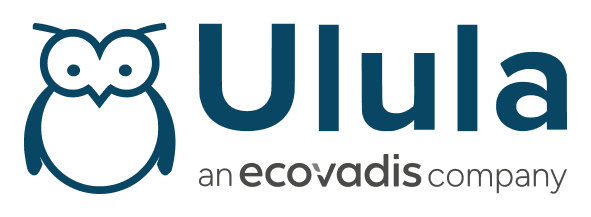When it was passed in 2018, Australia’s Modern Slavery Act was considered by its tabling minister to be a “milestone” in the fight against the “heinous crime” of modern slavery. The Act may have been a political milestone, but a number of worrying analyses have found it to be ineffective in practice.
The scheduled three-year review of the Act has just been announced by Australia’s incumbent Government, and now is a pertinent time for Australia to learn the lessons of the past and shape the modern slavery legislation of the future.
Australia’s Modern Slavery Act 2018 — Promise and Practice
The 2018 Global Slavery Index noted that 15,000 people were at risk of modern slavery in Australia. With an estimated 40.3m workers at risk of modern slavery around the world, many of whom currently employed in unsafe/coercive labor conditions in Asia, it is entirely plausible that goods associated with modern slavery remain endemic on Australian shopping shelves.
The Act shares more than just a name with the UK’s Modern Slavery Act of 2015; it mirrored its namesake’s flaws too. Although Australia’s Modern Slavery Act requires companies to publicly disclose measures they’ve taken to identify and address modern slavery risks in their supply chains, it does not mandate the manner in which remediation and due diligence are carried out. This last standard-setting element is a cornerstone of effective modern slavery legislation and its absense reveals one of the core weaknesses of Australia’s Modern Slavery Act.
In early 2022, The Human Rights Law Centre released their Paper Promises Report examining a sample of 102 Modern Slavery Statements submitted by Australian companies under the reporting requirements of the Act. The report found that just 59% of the companies met the mandatory reporting criteria on average, with less than one quarter meeting all of their reporting obligations, and over 52% failing to identify or disclose legitimate risks of modern slavery in their supply chains. Worst of all, only 27% of the companies had remediation procedures in place.
Additionally, the University of South Australia found that one in five large Australian businesses would fail to comply with the existing Modern Slavery Act. Worryingly, the report cited “confusion, a lack of knowledge and disinterest” as the main reasons for non-compliance. Surely, a law isn’t working if companies are able to ignore it?
Legislators were warned about the law’s shortcomings three years ago. Keren Adams, Legal Director of Australia’s Human Rights and Law Center, said at the time of the Act’s passing that: “A reporting scheme is not really mandatory if there are no consequences for companies that fail to comply.”
The Paper Promises report demonstrated that reporting obligations enable a passive approach to eradicating modern slavery in company supply chains. For many, the impact of the law is impaired by the absence of a mandate for companies to implement operational grievance or remediation mechanisms. Companies have no legal incentive to take action. The review is an opportunity to fill the gulf between promises made and promises kept.
What to Expect from the Government Review
A universal gold standard for fighting modern slavery has yet to be agreed upon by the global community. In the meantime, however, concerned countries around the world have had their fair share of both misstep and innovation in their efforts to legislate the ever-growing scourge of modern slavery. Despite the shortcomings of their Modern Slavery Act, Australia is credited with creating the world’s first register of Modern Slavery Statements from companies. The register — currently covering over 6,000 entities and 42 countries — allows individuals to search for and read the Modern Slavery Statements issued by companies regulated under the Act. With over one million searches to date, the register has helped improve transparency and public trust in the modern slavery policies of large corporations.
Australia’s recent change of governing parties has upped the stakes. The resurgent Labor Party has long campaigned on its commitment to modernizingAustralia’s Modern Slavery Act, even promising to appoint an Anti-Slavery Commissioner to improve compliance and ensure supply chain transparency. As part of their due diligence work, the Commissioner will publish an annual list of countries, regions, industries and products with a high risk of modern slavery and forced labor. Companies importing goods associated with the list will be required to prove those goods were not produced under coercive circumstances in conditions of modern slavery.
Critically, the Labour Party has also planned a consultation on the introduction of penalties for non-compliance. Targeted sanctions of entities and individuals are also on the table. Finally, the Australian Labor Party would follow Canada’s example by extending the Act to include public procurement.
The Australian Senate has recommended that the Customs Amendment Bill be changed to prohibit the import of goods associated with forced labor. They also want to provide the Australian Border Force with the legal right to issue rebuttable presumptions (a right to refuse import) for specific goods with a high risk of being made with forced labor, similar to Section 307 of the Tariff Act in the US.
A Headline Act, or Exit Stage Left?
Enforcement clauses, independent supervisory entities and increased power for customs officials will force companies to fortify their reporting with tangible preventative measures. Integrated operational mechanisms can eliminate the risk of grievances before goods hit Australian shores.
Advocates of a failure to prevent model in corporate liability would like to see businesses given a duty of care to take more direct responsibility for preventing practices of modern slavery along their value chains. Digital grievance mechanisms allow companies to communicate confidentially and directly with workers in their value chains with chatbots that establish live, phone and message-based communication systems for the independent resolution of grievances. Entities can receive live alerts about risk incidents in the supply chains they operate, and monitor progress on ticket resolution through shareable dashboards.
The review of Australia’s Modern Slavery Act is another milestone in the global fight against coerced labour. Beyond the commitments already made by the Labor Party and the Senate, the review shouldn’t overlook the proactive legislative approaches taken by France and the EU.
A failure to prevent clause would force companies not only to report on, but to take ownership of abuse in their supply chains. To simplify and streamline this new era of compliance, companies should consider taking advantage of technological advances in the field of human rights due diligence that allow them to mitigate risk and remediate grievances at scale.
Second generation HRDD legislation requiring companies to implement effective mechanisms that mitigate human rights risks is in the process of being ratified across major trading nations globally. These advances can help reassure large Australian companies of their continued ability to export to the US and EU without difficulty by helping them comply with growing HRDD-related trade and market access restrictions.

